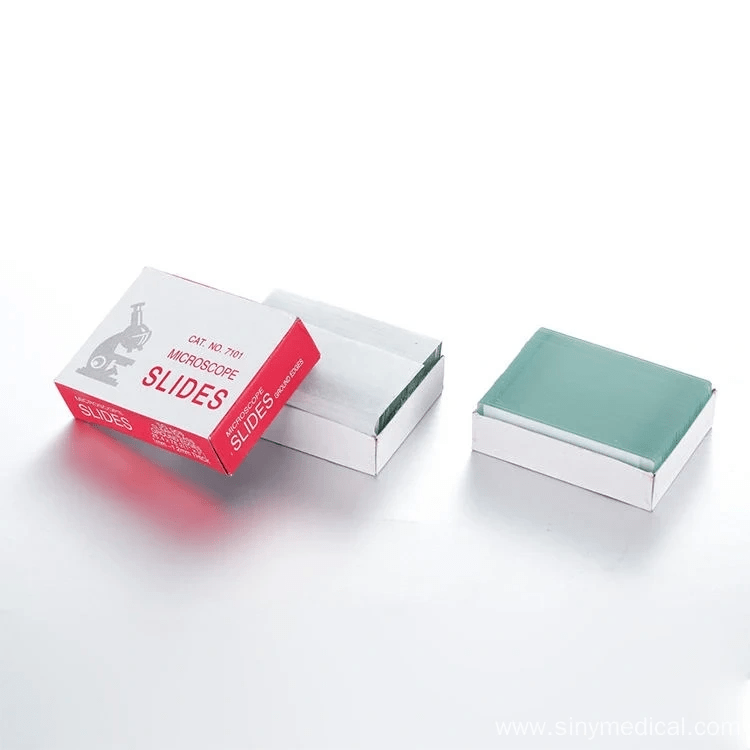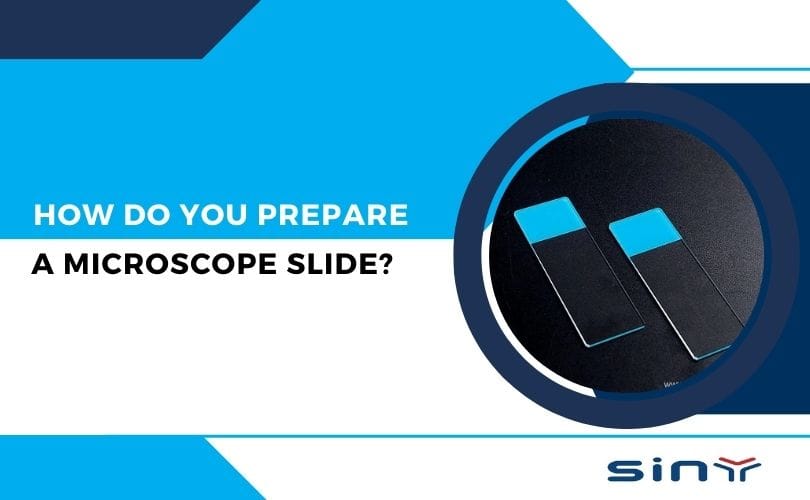Microscope slides should be disposed of safely and responsibly, following a few essential steps. Start by verifying that the slides are free from hazardous materials or chemicals. If they contain such substances, refer to local regulations to determine the appropriate disposal methods. Place clean slides in a durable container, like a plastic or metal box, to minimize the risk of breakage. Clearly label the container as “broken glass” or “sharps” to alert others to the potential hazard. Handle the container carefully to prevent injuries. Lastly, contact your local waste management or recycling center to learn about their specific protocols for disposing of glass or sharps.
Table of Contents
- 1 Understanding Microscope Slides
- 2 Importance of Proper Disposal of Microscope Slides
- 3 Potential Hazards of Improper Disposal
- 4 Types of Microscope Slides: Glass vs. Plastic
- 5 Why Proper Disposal of Microscope Slides Matters
- 5.1 Health Risks Associated with Improper Disposal
- 5.2 Identifying Contaminated Microscope Slides
- 5.3 Biological Contaminants
- 5.4 Chemical Contaminants
- 5.5 Regulations and Guidelines for Disposal
- 5.6 OSHA Standards
- 5.7 Methods for Safe Disposal of Microscope Slides
- 5.8 Chemical Disinfection
- 5.9 Autoclaving and Incineration
- 5.10 Specialized Waste Disposal Companies
- 5.11 Disposing of Biological Contaminants
- 5.12 Best Practices for Pathogen-Contaminated Slides
- 5.13 Use of Biohazard Bags and Containers
- 5.14 Disposing of Chemical Contaminants
- 5.15 Neutralization of Chemical Residues
- 5.16 Safe Disposal Procedures for Chemical Waste
- 5.17 Reusable vs. Disposable Microscope Slides
- 5.18 Pros and Cons of Reusable Slides
- 5.19 Cost-Effectiveness and Environmental Impact
- 5.20 Laboratory Waste Management Plan
- 5.21 Creating an Effective Waste Management Plan
- 5.22 Storage and Transportation of Used Slides
- 5.23 Safe Storage Practices
- 6 Safe Handling and Disposal of Broken or Damaged Microscope Slides
- 7 Conclusion
- 8 FAQs
Understanding Microscope Slides
Microscope slides are thin, flat pieces of glass or plastic used to hold specimens for examination under a microscope. These slides come in various types, each designed for specific applications. Common types include plain, frosted, and cavity slides, often coated with materials to enhance adhesion or fluorescence for particular analyses.

Slides are predominantly used in biological and chemical laboratories, hospitals, and educational institutions. They facilitate the study of microorganisms, cells, tissues, and other small specimens and play a crucial role in diagnostic pathology and research.
Importance of Proper Disposal of Microscope Slides
Proper disposal of microscope slides is essential to maintain a safe laboratory environment. Slides contaminated with biohazardous materials or chemicals can pose significant risks if not handled correctly. Inadequate disposal can lead to accidents, exposure to infectious agents, and environmental contamination. Therefore, understanding and implementing safe disposal practices are vital to protect both laboratory personnel and the environment.
Potential Hazards of Improper Disposal
Improper disposal of microscope slides can result in several hazards:
Chemical Hazards: Slides with chemical residues can cause skin irritation or environmental pollution if not disposed of properly.
Physical Injuries: Broken slides can cause cuts or puncture wounds.
Biohazard Risks: Contaminated slides can spread infectious agents.
Potential Hazards of Improper Disposal
Improper disposal of microscope slides can result in several serious hazards. The most immediate risk is physical injury. Broken glass slides can easily cause cuts or puncture wounds if not handled with care, especially when discarded improperly in regular trash bins where they might be hidden among other waste. These injuries can become more severe if the slides are in contact with infectious agents or hazardous chemicals, potentially leading to secondary health risks such as infections or chemical burns.
Types of Microscope Slides: Glass vs. Plastic
Microscope slides are typically made from either glass or plastic, each with unique advantages and disposal considerations.

Glass Slides
Glass slides are the most commonly used type in laboratories due to their clarity and ability to withstand various chemical treatments and stains. They are ideal for high-precision clinical, research, and educational work. However, glass slides are fragile and can easily break, posing a risk of injury. When disposing of glass slides, incredibly broken or contaminated ones, it is crucial to follow safety guidelines, such as using puncture-resistant containers and labeling them appropriately to prevent accidents.
Plastic Slides
Plastic slides are less common but offer certain advantages, particularly in settings where the risk of breakage is a concern. They are more durable and less likely to shatter than glass slides, making them safer, especially in environments with younger or less experienced personnel. However, plastic slides may only be suitable for some types of microscopy, particularly where high optical clarity is required. Additionally, plastic slides may only be compatible with some types of staining and preparation chemicals, limiting their use in some laboratory procedures. The disposal of plastic slides should still follow safety protocols,
Why Proper Disposal of Microscope Slides Matters
Improper disposal of microscope slides poses several risks. From an environmental perspective, broken glass and chemical residues can contaminate soil and water. Microscope slides contaminated with pathogens or hazardous chemicals can pose significant health risks to laboratory personnel and waste management workers if disposed of incorrectly.
Health Risks Associated with Improper Disposal
Improper disposal methods can lead to accidental injuries from broken glass, exposure to infectious agents, or harmful chemical exposure. For instance, a slide that contains blood-borne pathogens could cause severe infections if not handled and disposed of properly.
Identifying Contaminated Microscope Slides
Before disposing of microscope slides, it is essential to identify whether they are contaminated and what type of contaminants they might carry.
Biological Contaminants
Slides used for biological specimens, such as blood smears, tissue samples, or microbial cultures, often carry infectious agents. Proper identification is critical to determining the appropriate disposal method, ensuring pathogens are not inadvertently spread.
Chemical Contaminants
Some slides may have chemical residues, such as dyes or reagents used during preparation. Chemicals like formaldehyde, xylene, or heavy metal stains require specific disposal procedures to prevent environmental contamination and health risks.
Regulations and Guidelines for Disposal
Laboratories must follow strict guidelines and regulations when disposing of microscope slides. The Occupational Safety and Health Administration (OSHA) provides rules to protect workers handling hazardous materials, while the Environmental Protection Agency (EPA) offers guidelines on environmental safety.
OSHA Standards
OSHA regulations require laboratories to implement a standard operating procedure (SOP) for disposing of potentially hazardous materials, including microscope slides. These standards include using personal protective equipment (PPE), proper labeling, and training for all personnel involved in handling and disposal processes.
Methods for Safe Disposal of Microscope Slides
Several methods exist to dispose of microscope slides safely, each suited to different contaminants.
Chemical Disinfection
Chemical disinfection is often used for slides contaminated with biological agents. Disinfectants like bleach solutions effectively kill pathogens, allowing for safer disposal in regular waste streams.
Autoclaving and Incineration
Autoclaving uses high-pressure steam to sterilize slides, effectively neutralizing biological contaminants. On the other hand, incineration is a method to dispose of slides contaminated with biological and chemical substances. This method reduces waste volume and ensures the destruction of hazardous agents.
Specialized Waste Disposal Companies
Hiring a specialized waste disposal company is often the most effective method for laboratories that handle large volumes of hazardous materials. These companies are equipped to safely manage, transport, and dispose of biological and chemical waste and comply with all regulations.
Disposing of Biological Contaminants
When dealing with slides contaminated with biological materials, such as blood or bacterial cultures, specific procedures must be followed to prevent the spread of pathogens.
Best Practices for Pathogen-Contaminated Slides
Slides should be immersed in disinfectant immediately after use and disposed of in a biohazard container. Following this, they should either be autoclaved or handed over to a certified disposal company specializing in medical waste.
Use of Biohazard Bags and Containers
Biohazard bags and sharps containers are critical for safely disposing of contaminated microscope slides. These containers are designed to prevent punctures and leaks, ensuring that hazardous materials do not pose a risk to personnel handling the waste.
Disposing of Chemical Contaminants
Slides contaminated with chemical residues require different disposal procedures to mitigate chemical exposure risks.
Neutralization of Chemical Residues
You can neutralize specific chemical contaminants before disposal. For example, you can often neutralize slides with acidic or basic stains using the right neutralizing agents, which reduces their hazard level.
Safe Disposal Procedures for Chemical Waste
Chemical waste should be segregated and stored in appropriate containers before disposal. Labels should indicate the contents and hazards. Waste companies or hazardous waste management services should handle the final disposal process.
Reusable vs. Disposable Microscope Slides
There is an ongoing debate about using reusable or disposable microscope slides in laboratories. Each option has advantages and drawbacks.
Pros and Cons of Reusable Slides
Reusable slides are more environmentally friendly and cost-effective over the long term. However, they require thorough cleaning and sterilization after each use, which can be time-consuming and pose contamination risks if not done correctly.
Cost-Effectiveness and Environmental Impact
Disposable slides offer convenience and reduce the risk of cross-contamination. However, they contribute to environmental waste and can be more costly over time than reusable slides.
Laboratory Waste Management Plan
Developing an effective laboratory waste management plan is crucial for safely disposing of microscope slides and other hazardous materials.
Creating an Effective Waste Management Plan
An effective waste management plan should include a detailed inventory of all hazardous materials, safe handling and disposal procedures, and compliance with regulatory requirements. Conduct regular training sessions to ensure all personnel stay familiar with the latest disposal methods and regulations.
Training Staff on Proper Disposal Procedures
Proper training is essential for all laboratory staff to minimize risks associated with hazardous waste. Training should cover identifying dangerous materials, appropriate use of PPE, and correct disposal procedures.
Storage and Transportation of Used Slides
Proper storage and transportation of used microscope slides are crucial for maintaining safety until final disposal.
Safe Storage Practices
Used slides should be stored in puncture-resistant containers that are clearly labeled. This prevents accidental injuries and contamination.
Safe Handling and Disposal of Broken or Damaged Microscope Slides
Safely handling and disposal of broken or damaged microscope slides is essential to protect individuals and the environment from potential harm. Here are some best practices for properly disposing of microscope slides:
- Personal Safety: Always wear the appropriate personal protective equipment (PPE), such as gloves and safety goggles, when handling broken or damaged microscope slides. This protective gear shields you from potential injuries caused by sharp glass and prevents exposure to any hazardous materials that might be on the slides.
- Containment: Use forceps or tongs to pick up broken glass pieces to avoid direct contact carefully. Place the fragments into a puncture-resistant container, such as a sharps container or a sturdy plastic container with a secure lid. Regular trash bags or containers prone to puncture should be avoided to prevent injuries and leaks.
- Labeling: Clearly label the container with a warning, such as “Broken Microscope Slides – Handle with Care,” to alert others about the potential hazards. Proper labeling is crucial for ensuring that anyone handling the container is aware of its contents and can take appropriate precautions.
- Disposal: Reach out to your local waste management facility or adhere to the guidelines provided by your institution or municipality regarding the disposal of broken microscope slides. These entities may have specific protocols for handling and disposing of such materials to ensure safety and regulatory compliance.
- Recycling: Some locations have recycling programs for glass materials. Check with your local recycling center to determine if they accept microscope slides.
Conclusion
Proper disposal of microscope slides is critical to laboratory safety and environmental responsibility. Laboratories can minimize health risks and environmental impact by understanding the types of contaminants, adhering to regulations, and using the appropriate disposal methods. Implementing a robust waste management plan and training staff on proper disposal procedures are critical steps in achieving safe and compliant laboratory operations.
FAQs
How should I dispose of microscope slides safely?
Place broken or contaminated slides in a puncture-resistant, labeled container. Ensure you handle them correctly and safely by following your laboratory’s or municipality’s waste disposal guidelines.
What personal protective equipment (PPE) is needed for handling broken microscope slides?
Wear gloves and safety goggles to protect against cuts and exposure to hazardous materials. Wear a lab coat to shield your skin from potential contaminants.
Can microscope slides be thrown in regular trash?
No, microscope slides should not be thrown in regular trash. They may pose a risk of injury or contamination. Use designated sharps containers or follow specific disposal protocols.
Are there special containers required to dispose of microscope slides?
Place broken or contaminated slides in puncture-resistant containers, such as sharps containers or rigid plastic bins with secure lids, to prevent injuries and avoid contamination.
Can microscope slides be recycled?
Some recycling centers accept Laboratory Microscope Glass Slide but must be clean and adequately contained. Check with your local recycling program for specific guidelines.
What should I do with slides contaminated with biohazards or chemicals?
Dispose of them in specially labeled biohazard or chemical waste containers. Follow your laboratory’s protocols or local regulations to ensure safe handling and disposal.
Who do I contact for local regulations on microscope slide disposal?
For specific guidelines and regulations on microscope slide cover slides, contact your local waste management facility or your institution’s environmental health and safety office.
What are the environmental impacts of improper slide disposal?
Improper disposal can lead to soil and water contamination from chemicals and biohazards, posing risks to wildlife and ecosystems and violating environmental protection regulations.



























































